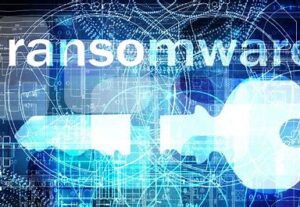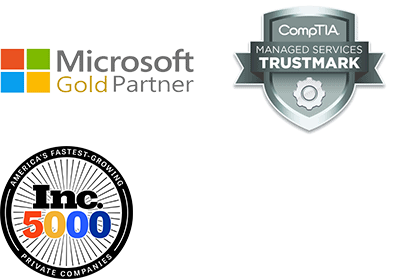“In the world of cyber, there’s no balance at all. Attack is super easy; defense is super hard.”
— Peter Thiel
By now, Peter Thiel’s speech on the world of cyber is not only famous around the world, it describes an increasingly true scenario in 2022. The number of cyber attacks is multiplying. This unfortunate fact is due to the rise of sophisticated cybercriminal organizations, SaaS designed to empower even the most beginner hacker with cutting-edge tactics, techniques and procedures (TTP) and AI-driven mass attacks.
Last year an estimated 30,000 websites were hacked EVERY DAY. That number continues to rise at an alarming rate. It is therefore incredibly important that businesses take meaningful actions to reduce risk.
As one of the premier Managed Services Providers and Cybersecurity Advisories in Colorado, we have developed a list of the top 7 practices that businesses can take to significantly reduce their risk.
1. Adopt Zero-Trust Security Protocols
More companies have heard of zero trust than practice it actively or comprehensively. Zero Trust operates fundamentally very different than cyberdefense protocols of the past, in that the perimeter defense (Ie. firewall) is not seen as THE line of defense, but only the FIRST LINE of defense. Taking this attitude allows us to identify and defend against security threats after they find their way in, but often before the threat can do any real damage.
Further Reading
Read more on 4 Simple Zero-Trust Security Protocols that your business can adopt today.
2. Real-Time Threat Detection
Real-Time Threat Detection increases network security by seeking to identify any malicious activity and neutralize it. It is software, sometimes Machine-Learning driven, that automatically searches through network activity, raising suspicious calls to the attention of IT professionals.
There are a number of Real-Time Threat Detection Solutions on the market today, but when dealing with cybercriminals that can deploy thousands of attacks with the push of a button, it is important that defenders have the tools to automate the discovery process.
Further Reading
Read more on The Future of CyberSecurity: Real-Time Threat Detection.
3. Do you have a firewall? Great, now make sure you manage it.
Having a business firewall is helpful. It deters bad actors who might very well move on to easier targets. However, as more and more businesses fall prey to cyber attacks, this type of defense become standard. Without proper management and monitoring of the perimeter, attackers can probe defenses as much as they like, until they find a vulnerability.
Monitoring the firewall gives defenders an early warning signal that attackers are persistently trying to breach the network.
Further Reading
5 Reasons Small Businesses Should Prioritize a Managed Firewall Service >
4. Create an incident response plan
We have health insurance, life insurance and homeowner’s insurance to handle cases where unlikely events can cause serious damage in our lives. For the same reasons every business needs an incident response plan.
An incident response (IR) plan guides your business’ response to a cyber security incident. IR details both technical and business processes, enabling all business and IT leaders to handle emerging threats efficiently and effectively. That reduces risk of an incident, but also the damages in the event that an incident does occur.
Every boat requires a life preserver. Every business needs IR.
Further Reading
What Is an Incident Response Plan?
5. Regular Cybersecurity Awareness Trainings
98% of cyber attacks rely on social engineering as their initial entry point to a network (Purplesec, “2021 Cyber Security Statistics”).
At this point there are hundreds of types of social engineering, and the list grows every year. These attacks include email tactics like phishing and whaling (See the next section on email security) but also SMS phishing, Pretexting, Scareware etc.
Any employee can be taken unawares by the most recent scam that delivers their credentials or their workstation to a malicious actor.
Cybersecurity awareness training is critical in protecting your company. We recommend regular training because hackers are constantly finding new, unexpected ways to fool their victims. New technologies, like deep fakes, become increasingly difficult to tell apart from the real thing. The more aware employees are of these changes, the easier it is for them to smell a rat.
Further Reading
Should Cybersecurity Awareness Training Be Digital or In-Person?
6. Email security – AI-driven filtering
Email continues to be among the most common social engineering attacks. Email is easy to automate and replicate. Hackers can replicate successful schemes to millions of people worldwide within hours.
It is impossible for cybersecurity awareness training to keep up, and no one would want it to. No employee wants to filter out spam and scam messages themselves. AI-driven email filtering applies machine learning on a macro scale to shut down email attacks before they are delivered to the target, saving time, money, annoyance and organizational risk.
7. Make Cybersecurity a Priority for Business Leaders
IT leaders fight an uphill battle with security when the business does not value security. A security incident is not always necessary to convince everyone of the need for advanced cybersecurity measures.
- Regularly communicate the risks and evolution of the IT Security landscape
- Communicate and reiterate the protective measures that the organization should adopt
Platte River Networks practices these 7 security measures for our clients. Many small and mid-sized businesses benefit from outsourcing the expertise and resources required to stay on top of their security. But regardless of who does the work, it is absolutely essential that these 7 activities be taken on. Every successful hack brings that many more resources to cybercriminals, feeds the beast and increases scams, spam and ransoms for everyone.
If you have any questions, please email david@platteriver.com for more information.





